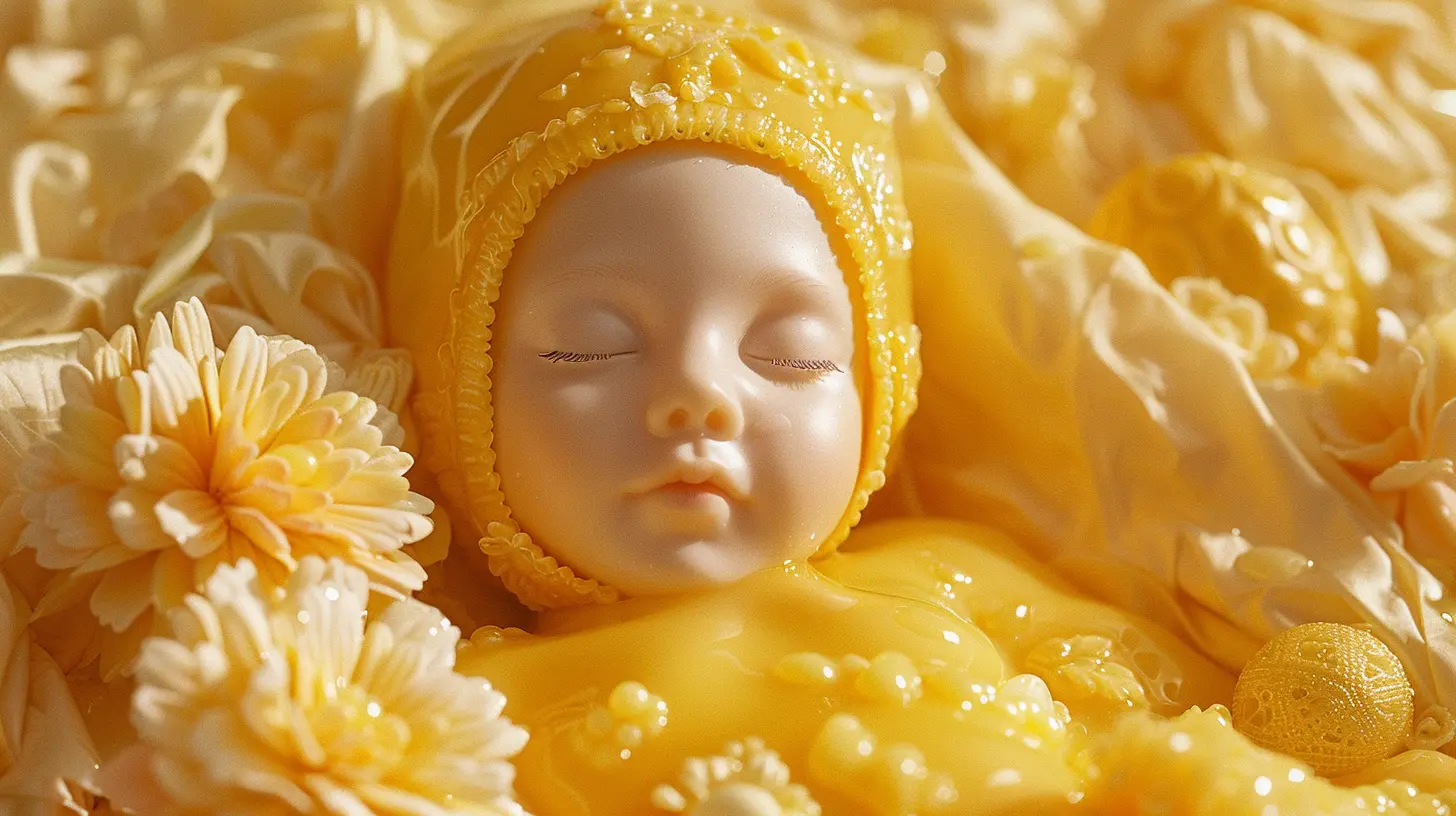Newborn Jaundice: Signs, Causes, and Treatment Options
13 June 2025
You’re finally holding your tiny bundle of joy in your arms, soaking in every coo and cuddle — when suddenly, you notice that your baby’s skin has taken on a yellowish tint. Panic creeps in. “Is this normal?” you wonder. This mysterious yellow shade leads many new parents down a rabbit hole of Googling at 3 a.m.
Relax. Take a breath.
That yellow hue may be a pretty common newborn condition called jaundice. And while the word itself might sound scary, it's usually no cause for alarm — especially when caught early and managed properly.
In this post, we’ll peel back the layers of newborn jaundice, piece by piece — like one of those mystery novels you can’t put down. We’ll talk about the signs to watch out for, what actually causes it, and dive deep into the various treatment options you can consider.
Let’s uncover the truth behind your baby’s yellow glow.
What Is Newborn Jaundice?
Jaundice is when your baby’s skin or the whites of their eyes take on a yellowish tone. Sounds odd, right? But it’s more common than you think. In fact, about 60% of full-term and 80% of preterm babies develop jaundice in their first week of life.This yellowing is caused by a substance called bilirubin — a yellow pigment that forms when red blood cells break down. Since newborns have more red blood cells at birth (and they break down faster), there's more bilirubin floating around in their system.
Here’s the kicker: A newborn’s liver isn’t fully matured yet, so it can’t efficiently process and remove bilirubin like yours or mine can. That build-up causes the yellowing you see. Ta-da — mystery solved! Well, part of it.
Let’s go deeper.
Signs of Newborn Jaundice: What Should You Look For?
So, how can you tell if your baby actually has jaundice or just has that “newborn glow”? The signs can be sneaky, especially if your baby’s skin tone makes the yellowing less obvious.Here’s what to look for:
1. Yellow Tint to Skin and Eyes
Start with the face. Jaundice usually appears on the face first, then it may spread to the chest, tummy, arms, and legs — kind of like a yellow tide washing over.And check the whites of their eyes — if they have a yellowish hue, that’s a solid giveaway.
2. Trouble Feeding
Is your baby too sleepy to latch properly? Not feeding well? That could be linked with jaundice since babies with high bilirubin levels often feel drowsy.3. Dark Urine or Pale Poop
This one’s important. Babies usually have pale yellow or colorless pee and mustard-colored poop. But if your baby’s pee looks concentrated (dark yellow or orange) or the poop seems unusually pale, it may be time to ring the doctor.4. Unusual Lethargy
Sure, newborns sleep a lot. But if your baby is excessively sleepy, difficult to wake up for feedings, or less responsive, it could be tied to elevated bilirubin levels.Don’t just brush it off. Trust your instincts.
What Causes Newborn Jaundice?
Now that you know what to look for, let’s talk about the why. Why does this happen to so many babies?1. Physiologic Jaundice (The "Normal" Kind)
This is the most common type. As we mentioned earlier, newborns have immature livers and break down red blood cells quickly. Most cases of jaundice fall under this umbrella and typically fade within 1–2 weeks.2. Breastfeeding Jaundice
Wait… breastfeeding causes jaundice? Kind of.This happens when babies don’t get enough milk in the first few days to flush out bilirubin. It’s not the milk itself causing the issue — it’s the lack of milk intake. Breastfeeding jaundice often improves as feedings become more frequent and efficient.
3. Breast Milk Jaundice
Different from the one above, this one is a bit of a mystery. It’s believed that certain substances in breast milk might interfere with the liver's ability to process bilirubin. It usually appears later — around the 5th to 7th day — and can last several weeks, but babies are otherwise thriving.4. Blood Type Incompatibility
If mom and baby have different blood types, it can cause a faster breakdown of red blood cells. For instance, if mom is Rh-negative and baby is Rh-positive, or even with ABO incompatibility (say, mom is type O and baby is A or B), bilirubin can spike quickly.5. Premature Birth
Preemies have even less developed livers than full-term babies. Plus, their bodies might absorb more bilirubin from their intestines. So, they’re at higher risk.6. Underlying Conditions
In rare cases, jaundice can be a red flag for something more serious — like liver issues, infections, or even enzyme deficiencies. But don’t jump to conclusions yet. Most of the time, jaundice is harmless and temporary.
Is Newborn Jaundice Dangerous?
Now, here’s the question that’s probably been haunting you: “Can this hurt my baby?”For most babies — no. It’s a passing phase that clears up on its own or with minimal treatment. But — and this is important — severe jaundice that goes untreated can lead to something called kernicterus, a rare form of brain damage caused by extremely high levels of bilirubin. This is why early detection and treatment matter.
Look at it like this: A little yellow light isn’t a problem. A bright, blinking warning sign? That deserves attention.
Diagnosing Newborn Jaundice: What to Expect
If your doctor suspects jaundice, they’ll usually run a few tests. This isn’t to alarm you — just to figure out how much bilirubin is in your baby's system and what (if anything) needs to be done.1. Visual Exam
The doctor will examine your baby's skin and eyes. But since visual signs alone aren’t always reliable, they may dig deeper.2. Transcutaneous Bilirubin Meter (TcB)
This is a fancy little device they place on the baby’s head or chest. It uses light to measure bilirubin levels — quick and painless.3. Blood Test (Serum Bilirubin)
If the TcB reading is high, a blood test might be ordered to get a more accurate number. This is the gold-standard method.Based on the results, your pediatrician will recommend the best course of action.
Treatment Options for Newborn Jaundice
Alright, let’s get to what you’re likely most curious about — how do we treat this?The good news is that most jaundice cases resolve without any heavy-duty medical treatment. But when bilirubin levels go up, there are several options:
1. Phototherapy (Light Therapy)
The MVP of jaundice treatment.Your baby will be placed under a special blue light — it helps break down the bilirubin in the skin so it can be excreted more easily. Think of it as a mini tanning bed, minus the UV rays. Sometimes, a fiber-optic blanket is used too, which wraps around your baby like a glowing burrito.
This treatment is generally safe, and many parents report that their babies love the warmth.
2. Frequent Feeding
Whether you’re breastfeeding or bottle-feeding, making sure your baby gets plenty of milk can help flush out that extra bilirubin through urine and poop.Aim for 8–12 feedings a day. Yes, that’s practically round-the-clock. Welcome to parenthood.
3. Supplementation
If your milk hasn’t come in yet or your baby isn’t latching well, your doctor might suggest supplementing with pumped breast milk or formula to ensure enough intake.4. Exchange Transfusion (Rare & Serious Cases)
In extreme cases, when bilirubin levels are dangerously high and not responding to light therapy, a procedure called exchange transfusion might be needed. It involves replacing the baby’s blood with fresh donor blood to quickly lower bilirubin levels.Scary? Yes. But also very rare and life-saving when needed.
When Should You Call the Doctor?
Okay, here's the moment to grab your phone.Contact your pediatrician if:
- Your baby’s yellowing seems to be spreading or getting worse beyond day 5
- They’re not feeding well or producing fewer wet/dirty diapers
- They’re overly sleepy or less alert
- Their poop is pale or urine is dark
- Jaundice persists beyond 2–3 weeks without improvement
Better to overreact than underreact. Trust your gut — it’s your best parenting tool.
How Long Does Jaundice Last in Newborns?
For most babies, jaundice peaks around day 3 to 5 and resolves by 2 weeks. If your baby was premature or has breast milk jaundice, it might linger for a bit longer — even up to 12 weeks in some cases.As long as bilirubin levels are monitored and your little one is thriving, don’t sweat it too much.
Final Thoughts: It’s a Yellow Light, Not a Red Flag
Newborn jaundice might seem mysterious at first — like one of those riddles wrapped in a yellow bow. But once you understand it, the fear tends to melt away.Most cases are totally manageable, and with a little watchfulness (and maybe a blue light photo shoot), your baby will be back to their rosy, snuggly self in no time.
The key? Stay observant, stay calm, and ask questions. Your baby doesn’t come with a manual, but you’ve got instinct, support, and a tiny human who depends on you. You’ve got this.
all images in this post were generated using AI tools
Category:
Newborn CareAuthor:

Noah Sawyer
Discussion
rate this article
2 comments
Paris Oliver
Unseen shadows in newborn care.
June 15, 2025 at 2:54 AM

Noah Sawyer
Thank you for your comment! Newborn care often involves addressing hidden issues, including jaundice, which can be easily overlooked. It's essential to monitor all signs closely for the best outcomes.
Wynter McSweeney
Jaundice is common but often misunderstood; knowledge empowers parents to act swiftly for their newborn's health.
June 14, 2025 at 4:48 PM

Noah Sawyer
Thank you for your insightful comment! You're absolutely right—understanding jaundice is crucial for timely intervention and ensuring the health of newborns.


